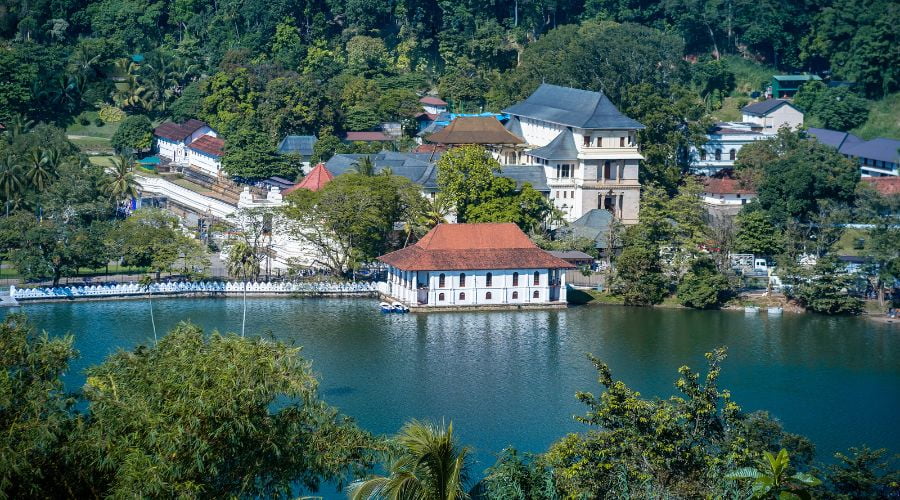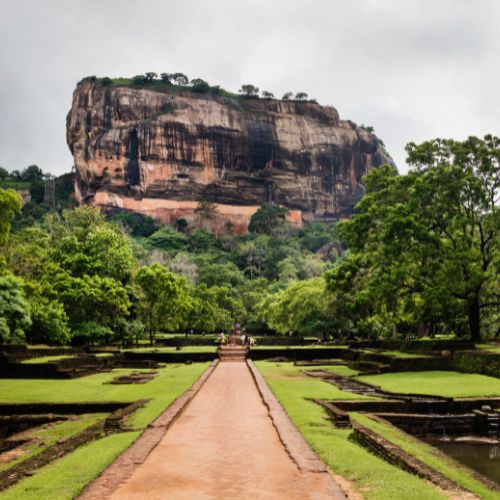World Heritage Sacred Cities and Cave Temple in Sri Lanka
Sacred City of Anuradhapura

Anuradhapura is a major city located in north central plain of Sri Lanka. It is the capital city of North Central Province and the headquarters of Sri Lanka’s archaeological survey. The city lies 205 km north of the current capital of Colombo, on the banks of the historic Malvathu River.
The city is now a World Heritage Site, famous for its well-preserved ruins of the ancient Sinhalese civilization.
The ancient city of Anuradhapura was a Ceylonese political and religious capital that flourished for 1,300 years. According to records in Sinhalese Chronicles, King Pandukabhaya formally planned the city with gates and quarters for traders, made it one of the largest cities on the continent at the time. The city was abandoned after the invasion by the Chola Tamil Hindu king in 993CE and his son in 1014 CE.
Anuradhapura was a major intellectual center for early Theravada Buddhism, home to revered Buddhist philosophers including Buddhaghosa.
During the reign of Dhatusena (455-473), a redaction of the Theravada Buddhist canon took place while at the same time 18 new vihara (temple complexes) were built and a statue erected for Mahinda, the Indian prince-monk who introduced Buddhism to the island.
This sacred city was established around a cutting from the ‘tree of enlightenment’, the Buddha’s fig tree, brought there in the 3rd century B.C. by Sanghamitta, the founder of an order of Buddhist nuns..
Sacred City of Kandy

Kandy is Sri Lanka’s second largest city located in the mountainous center of the island. The city lies in the midst of hills in the Kandy plateau, which crosses an area of tropical plantations, mainly tea. Kandy is both an administrative and religious city and is also the capital of the Central Province, declared a world heritage site by UNESCO in 1988.
This sacred Buddhist site, popularly known as the city of Senkadagalapura, was the last capital of the Sinhala kings whose patronage enabled the Dinahala culture to flourish for more than 2,500 years until the occupation of Sri Lanka by the British in 1815. It is also the home of the Temple of the Tooth Relic (the sacred tooth of the Buddha), which is a famous pilgrimage site.
Rangiri Dambulla Cave Temple

Dambulla is a town situated in the north of Matale District, Central Province of Sri Lanka, 148 kilometres east of Colombo capital , 72 kilometres north of Kandy.
Dambulla Cave Temple, also known as the Golden Temple of Dambulla is a sacred pilgrimage site for 22 centuries, this cave monastery, with its five sanctuaries, is the largest, best-preserved cave-temple complex in Sri Lanka. The site was inscribed as a World Heritage Site in 1991.
The temple is composed of five caves of varying sizes and magnificence. The caves, built at the base of a 150m high rock during the Anuradhapura (1st century BC to 993 AD) and Polonnaruwa times (1073 to 1250). The rock towers 160m over the surrounding plains.
There are more than 80 documented caves in the surrounding area. Major attractions are spread over five caves, which contain statues and paintings. These paintings and statues are related to Gautama Buddha and his life.
The caves cover an area of 2,100 m2. There are a total of 153 Buddha statues, three statues of Sri Lankan kings and four statues of god and goddess. The latter four include two statues of Hindu gods, Vishnu and Ganesh.



